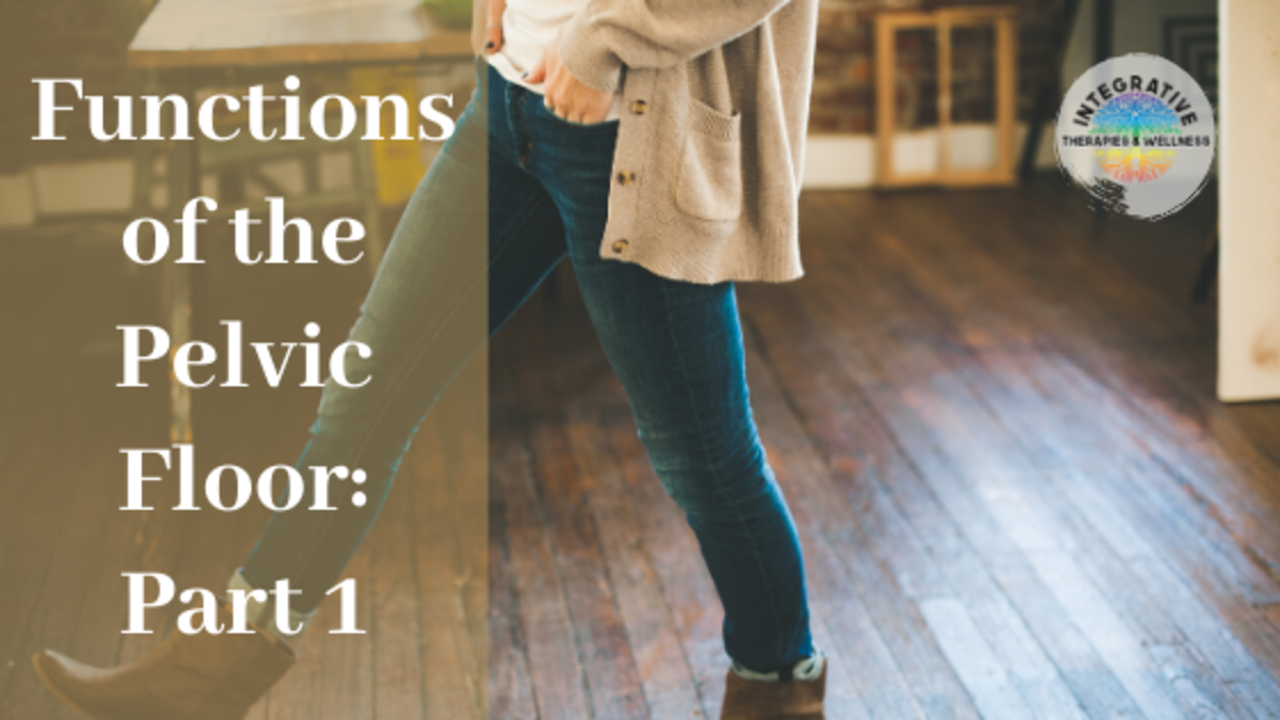Functions Of The Pelvic Floor: Part 1

The Body’s Shock Absorber
After the birth of my 3rd child, via c-section, I embarked on an intense fitness endeavor in pursuit to restore my pre-pregnancy body. Within a year I had surpassed my goals but was experiencing back pain. I was in the best shape I had ever been in my life and the lowest weight I had been in years. I golfed with my gal pals Thursday evenings. After golfing on a Thursday, I began experiencing an odd sensation in my right hip. No pain, but a peculiar feeling. The symptoms further progressed the more active I became.
Long story short, I ruptured a disc in my lumbar region and underwent immediate surgery due to loss of function in my right lower extremity. I was terrified! Afraid I’d never return to my former level of activity and potential never get rid of the pain. During this time I was training to become a pelvic floor occupational therapist. I began learning about the importance of the pelvic floor and inner core. Which brought me to the realization that even though I was in the best shape of my life, I had no inner core stability and an unhealthy pelvic floor!
Even though the pelvic floor muscles lie deep in the center of our body, palpable but not visible, they have a great impact on our posture and core stability. The pelvic floor is the bottom of our inner core, with the respiratory diaphragm at the top, the multifidus muscle in the back, and the transverse abdominus muscle that wraps around the trunk from front to back between the ribs and hips like a corset. The union of muscles and fascia create a “canister” effect. 
These deep muscles work together to provide the first step in stabilization of the trunk and pelvis, providing joint control during the body’s motion. In normal function, these muscles are programmed to contract automatically and simultaneously before any movement or other muscle contractions. It is critical to prevent low back, hip, and pelvic joint injuries and joint dysfunction.
The pelvic floor is the center of gravity for the body and is where movement is initiated. It allows coordination between the pelvic floor, abdominal, hip, and back muscles. The pelvic floor is always working at a low-level, a reflexive action while doing activities. Every time the heel strikes the floor during walking or activity the pelvic floor absorbs the force. The pelvic floor muscle should never be held in constant contraction as it increases intra-abdominal pressure and cannot kick-in reflexively to absorb the force, potentially “giving way” and weakening.
It’s important for the inner core muscle to be trained in isolation before moving to more traditional “core strength” exercises. It is very important that the muscles of the inner core work in coordination with each other. Any weakness or over activity of any of these muscles causes a dysfunction of the entire system. There is an intricate balance in this muscle group that allows for proper pressure mechanics providing motor control and joint stability to prevent injury.
If you suspect your pelvic floor or other inner core muscle may not be functioning optimally and may be contributing to some of your symptoms, schedule a consultation with a pelvic floor therapist today!
Erin N. Lindberg, OTR/L
Integrative Therapies & Wellness, LLC
Stay connected with news and updates!
Join our mailing list to receive the latest news and updates from our team. Your information will not be shared.
-----THIS INFORMATION IS NOT A SUBSTITUTE FOR, NOR DOES IT REPLACE, PERSONALIZED MEDICAL ADVICE, DIAGNOSIS, OR TREATMENT. IF YOU HAVE ANY CONCERNS OR QUESTIONS ABOUT YOUR HEALTH, YOU SHOULD ALWAYS CONSULT WITH A HEALTH-CARE PROFESSIONAL. THE USE OF ANY INFORMATION PROVIDED IS SOLELY AT YOUR OWN RISK. -----

